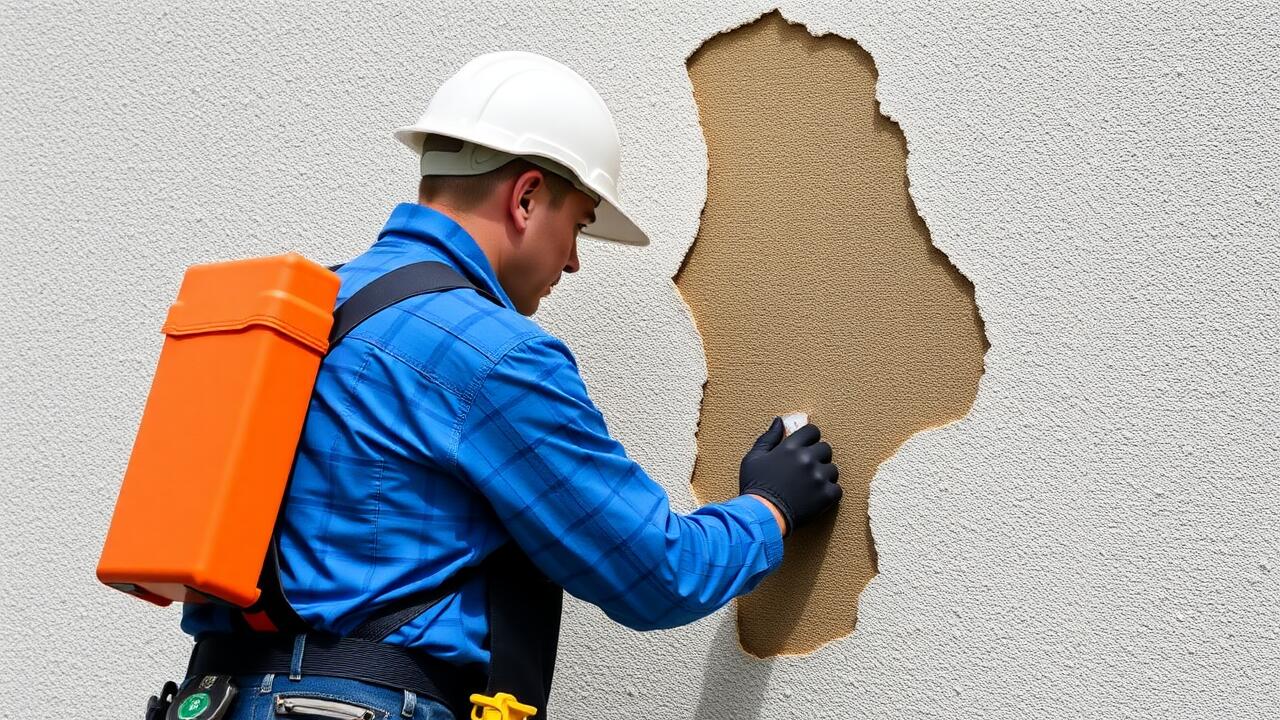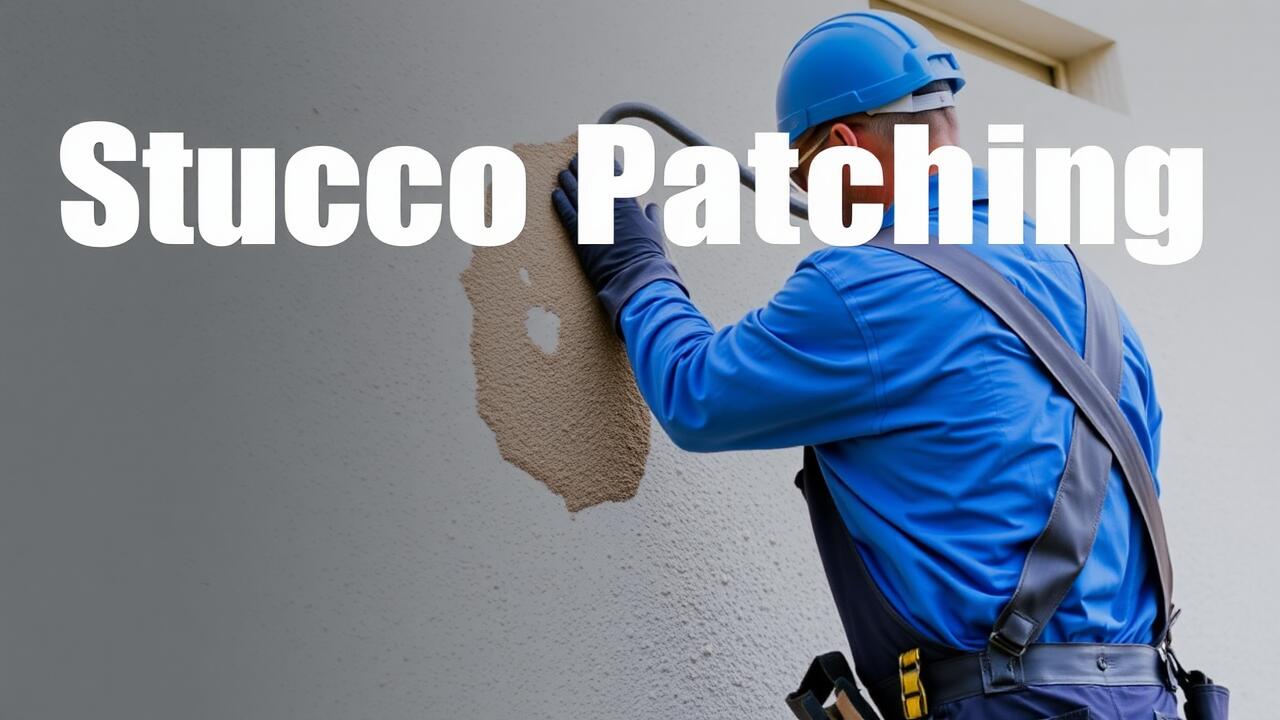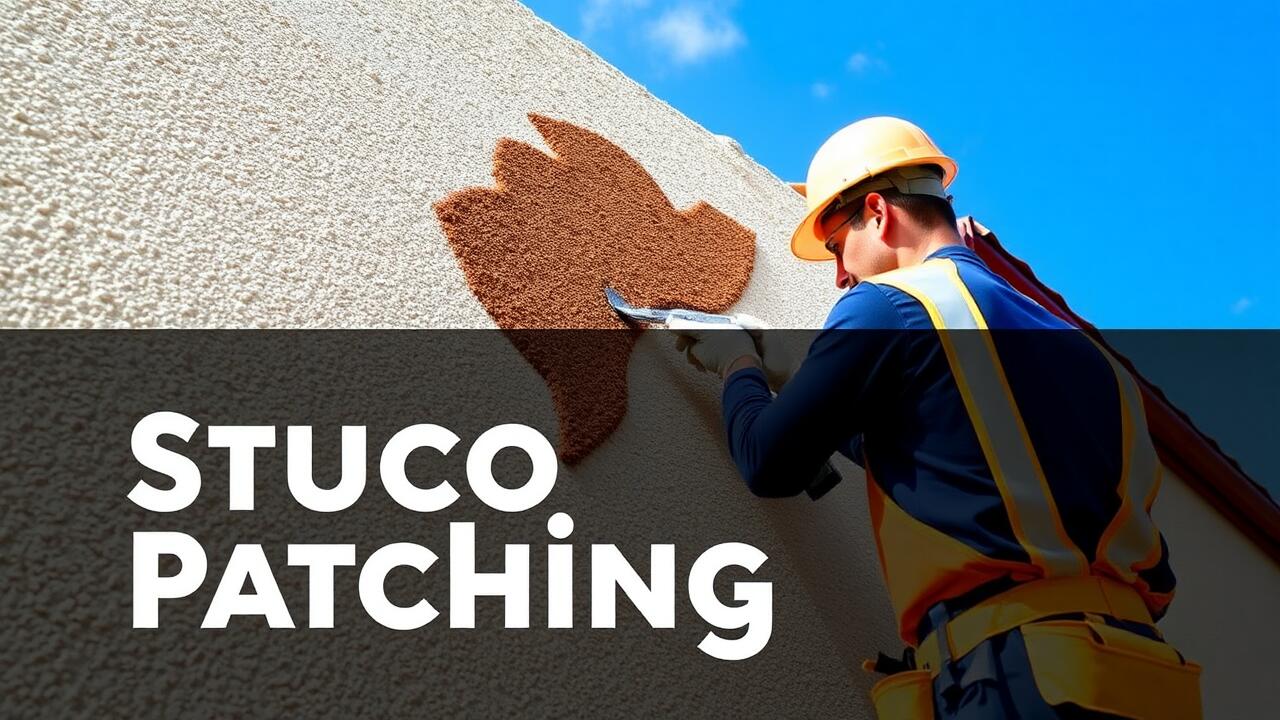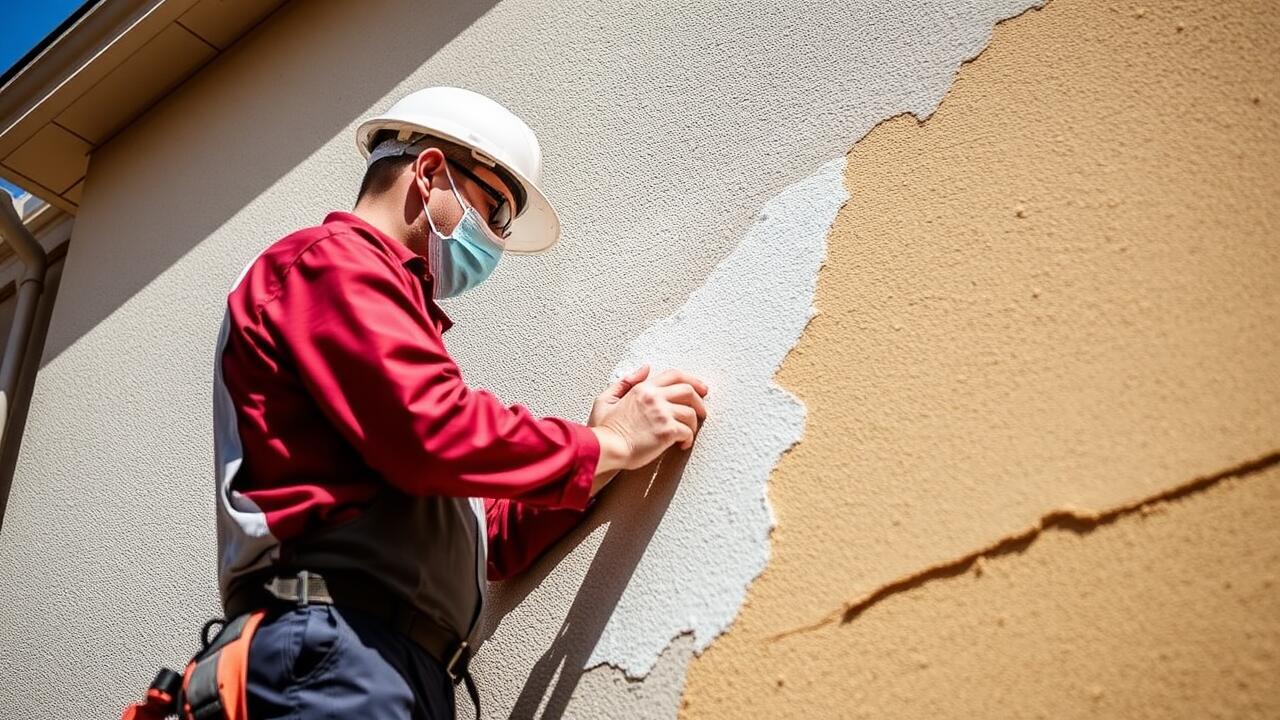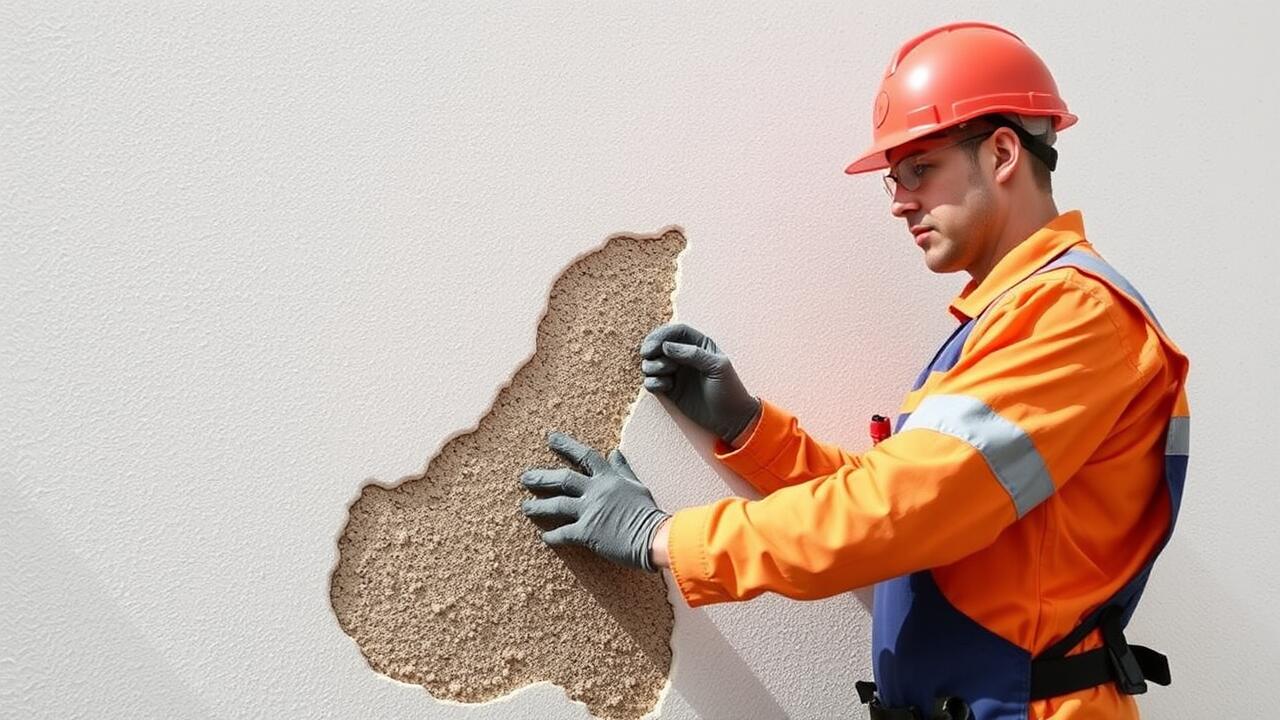
Step-by-Step Guide to Applying Sealant on Stucco
Before applying the sealant, ensure that the stucco surface is clean and free from debris. Begin by using a wire brush or a pressure washer to remove any loose particles, dirt, or existing paint that might interfere with adhesion. Once the surface is prepared, allow it to dry thoroughly. If you are working on a large area or multiple holes, consider using a patching compound specifically designed for stucco to fill in deeper imperfections. This will create a smooth base for the sealant application.
Next, select a high-quality silicone or acrylic sealant that is suitable for exterior use and compatible with stucco surfaces. Apply the sealant using a caulking gun, ensuring coverage over the patched area. Use a putty knife or your finger to smooth out the sealant, creating a seamless finish. For best results in a specific region like Stucco Patching Echo Park, Los Angeles, pay attention to the local climate conditions that could affect the curing process of the sealant. Avoid working on extremely hot days or when rain is imminent to achieve optimal results.
Tools and Materials Needed for the Job
Proper tools and materials are essential for successfully sealing holes in stucco. You will need a high-quality sealant formulated specifically for exterior surfaces. A paintbrush or putty knife will help with precise application, ensuring the sealant fills any gaps effectively. Additionally, look for caulking guns to make application smoother and more controlled. Having a wire brush or scraper on hand will assist in preparing the surface by removing any debris or loose materials.
In addition to the sealant and application tools, ensure you have safety gear like gloves and goggles. These will protect you from any irritants present in the materials. A drop cloth is also advisable to catch any drips during the sealing process. If your stucco shows extensive wear or damage, consider consulting professionals who specialize in Stucco Patching Venice, Los Angeles, for comprehensive repairs before applying sealant.
Common Mistakes to Avoid When Sealing Stucco
One common mistake when sealing stucco is neglecting to properly clean the surface before application. Dust, dirt, and debris can prevent the sealant from adhering effectively, leading to ultimately compromised results. For those in the area, seeking help for stucco maintenance such as "Stucco Patching Granada Hills, Los Angeles" can provide valuable guidance on the cleaning and preparation process. Taking the time to ensure the surface is clean can dramatically improve the longevity of the sealant.
Another frequent misstep is applying the sealant too thickly. Many people believe that a thicker layer will offer better protection, but this can cause the sealant to crack or peel over time. Following the manufacturer's instructions for application thickness is crucial. DIY enthusiasts may find consulting local experts for advice and assistance, especially with practices specific to "Stucco Patching Granada Hills, Los Angeles," can lead to a more effective sealing job.
Ensuring Proper Surface Preparation
Proper surface preparation is crucial for achieving a strong bond between the sealant and the stucco surface. Start by inspecting the area for any loose or damaged stucco. Remove any flaking material and clean the surface to eliminate dirt, dust, or debris. A wire brush or a pressure washer can effectively remove stubborn particles. Allow the surface to dry completely before proceeding. This will ensure that the sealant adheres properly and forms a long-lasting seal against moisture.
After cleaning, examine the cracks or holes that require sealing. For larger gaps, consider using a stucco patching compound to fill them in before applying sealant. This not only provides a solid foundation but also helps prevent further damage. If you're in the area, services like Stucco Patching North Hollywood, Los Angeles, can assist with more extensive repairs, ensuring the surface is well-prepared for the final sealing process. Always follow manufacturer guidelines for the sealant to achieve the best results.
Maintenance Tips for Sealed Stucco
Regular maintenance of sealed stucco is essential for ensuring its longevity and effectiveness. Begin by inspecting the surface periodically for any signs of damage or wear, especially after severe weather events. If you notice any cracks or peeling, address these issues promptly to prevent moisture infiltration. Gentle cleaning with a soft brush and mild detergent can help remove dirt and debris without compromising the sealant.
Consider reapplying sealant every few years to maintain the protective barrier. The frequency can depend on climate conditions and the specific sealant used. Properly executed stucco repair, such as through professional services like Stucco Patching West Adams, Los Angeles, can greatly extend the life of your sealing efforts. Be mindful of using high-quality products to ensure that the finish remains intact and continues to repel moisture effectively.
How to Extend the Lifespan of Your Sealant
Regular maintenance can significantly enhance the longevity of your sealant. Start by routinely inspecting the sealed areas for any signs of wear or damage. Addressing minor issues promptly can prevent further deterioration. Clean the surface gently with a mild detergent and water to remove dirt or debris that might cause the sealant to degrade over time. Avoid using harsh chemicals or abrasive materials, as these could compromise the sealant's integrity.
Consider seasonal changes when planning maintenance. Different weather conditions can affect the performance of sealant, especially in regions experiencing extreme temperatures. In Boyle Heights, Los Angeles, it's advisable to undertake a seasonal check-up, particularly after heavy rain or intense heat. This proactive approach ensures the sealant remains effective, safeguarding your stucco from moisture and other damaging elements common in the area.
FAQS
What type of sealant is best for holes in stucco?
The best sealants for holes in stucco are typically elastomeric sealants or silicone-based sealants, as they can accommodate movement and provide a durable, weather-resistant bond.
How do I prepare the stucco surface before applying sealant?
To prepare the stucco surface, clean the area thoroughly to remove any dirt, dust, or debris. Ensure the surface is dry and free from any loose particles. If necessary, use a wire brush to scuff the surface for better adhesion.
Can I paint over sealant on stucco?
Yes, you can paint over sealant on stucco once it has fully cured. Make sure to choose a paint that is compatible with the sealant and suitable for outdoor use.
How long does sealant for stucco last?
The lifespan of sealant for stucco can vary based on the type used, environmental conditions, and maintenance. Generally, high-quality sealants can last from 5 to 10 years.
What are some common mistakes to avoid when sealing stucco?
Common mistakes include failing to properly clean and prepare the surface, using the wrong type of sealant, applying sealant in wet conditions, and not allowing sufficient drying time before painting or exposing the area to moisture.
